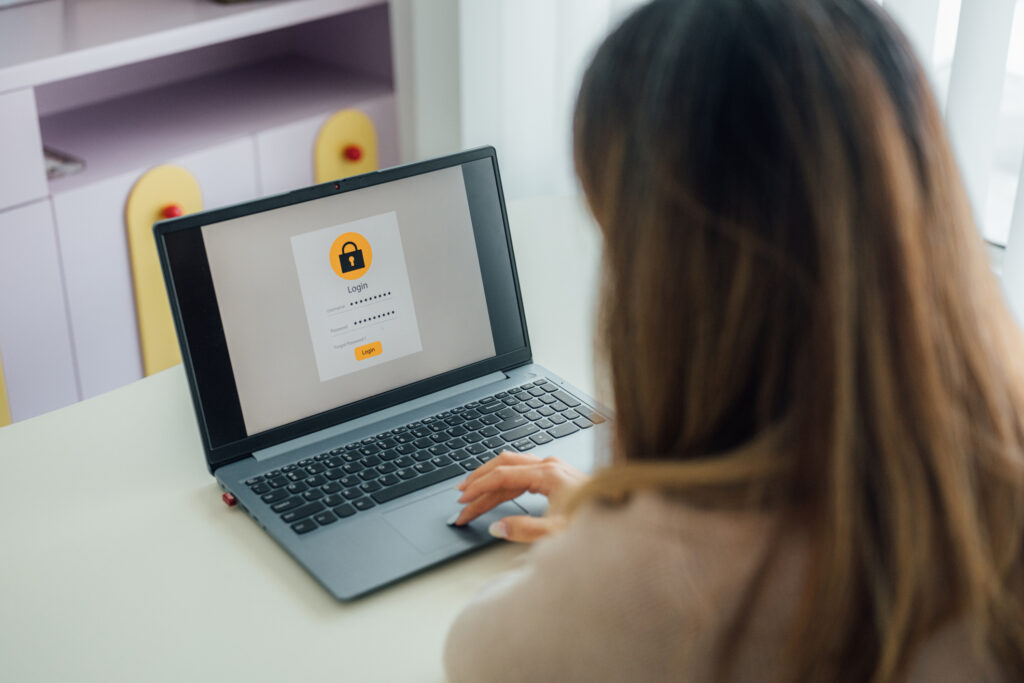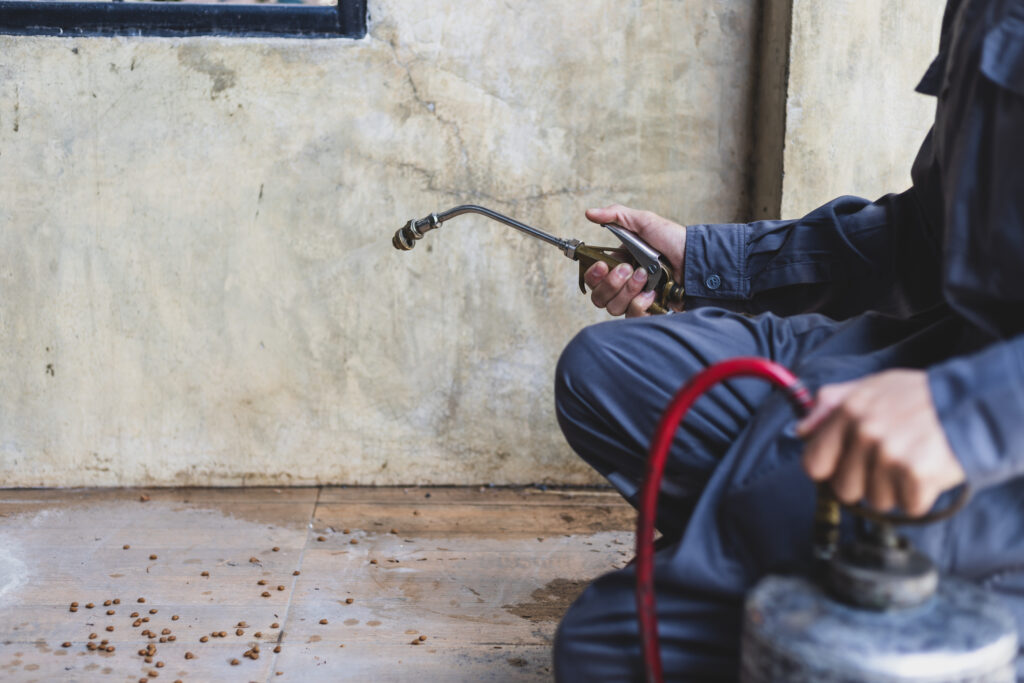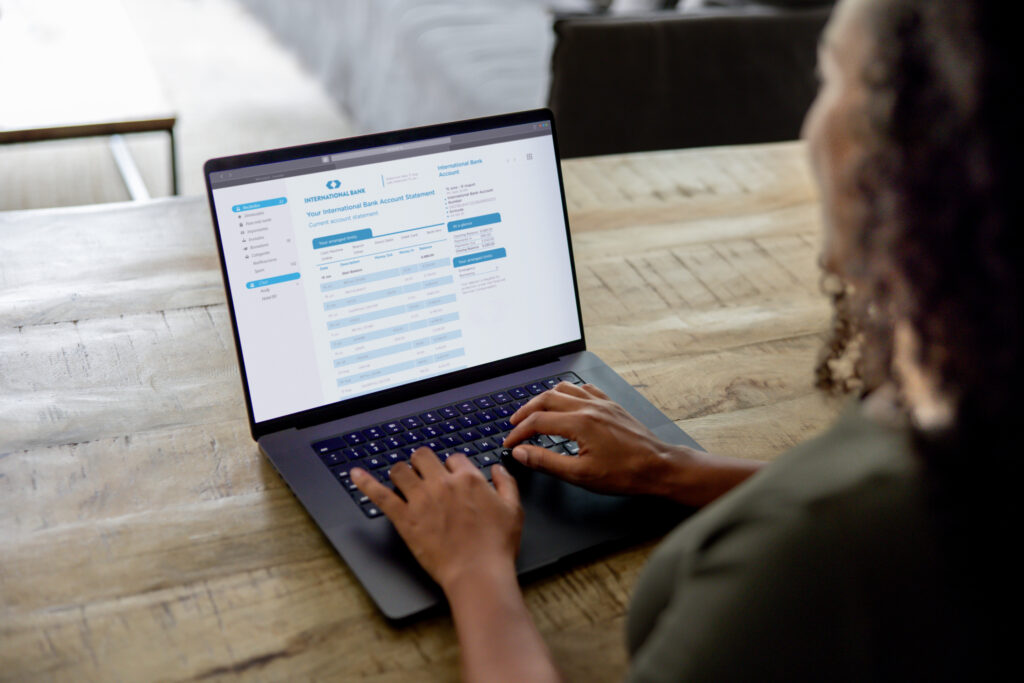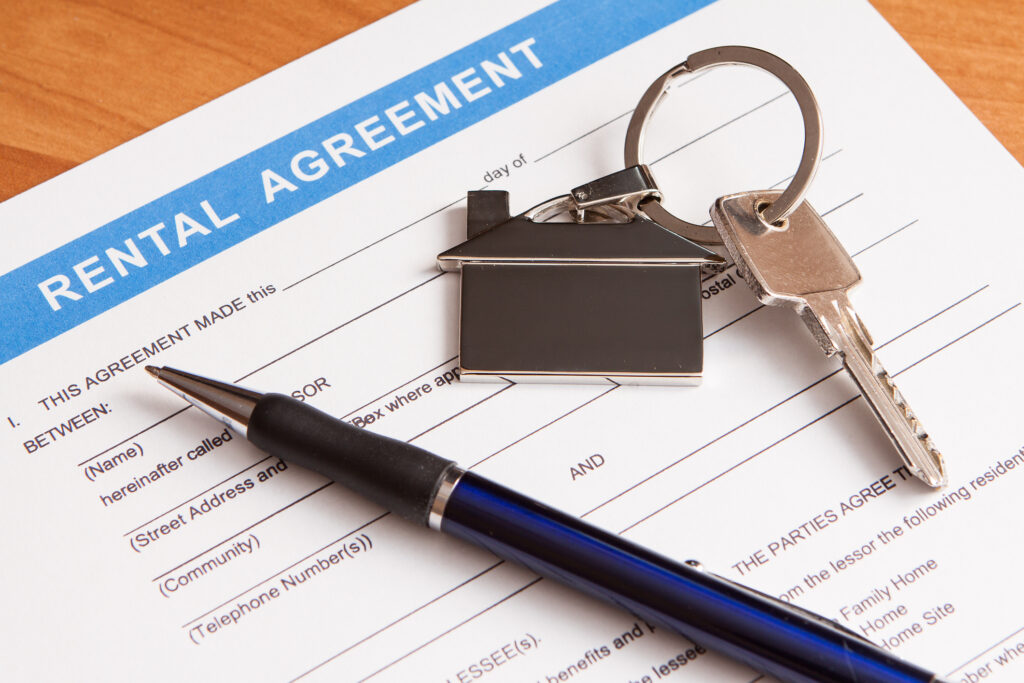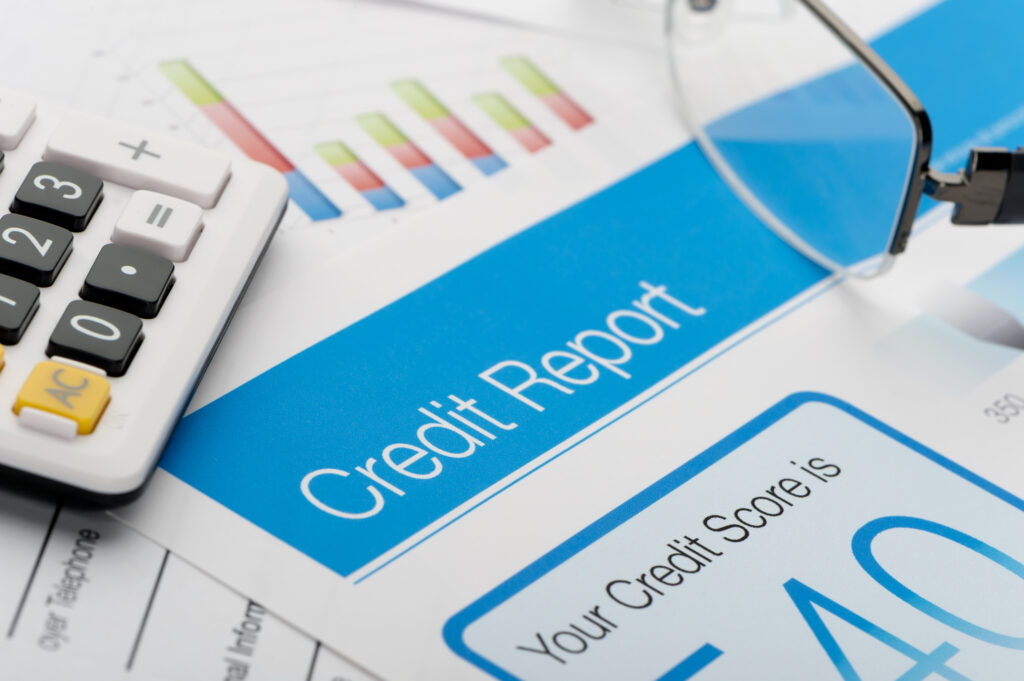Resident Benefits and Amenities
Our Promise
Professional, N0-attitude, Responsive, 5-star Service promise!
Resident Experience
Financial Benefits
Pet Benefits
Pathway to Homeownership
For those in Good Standing and Caring for the Property:
- 2 Sessions with one of our Realtors to advise on Homebuying
- Introduction to a Lender who can advise on Financing
- $100 Credit Repair Services with Heartland Credit Restoration
- $1,500 for Home Buying Assistance with our approved Realtors (Paid at Closing)
- Rent payments reported to three credit bureaus to improve credit
Benefits are subject to change at any time and are only available to tenants in good standing who have paid the monthly benefits charge. Some financial benefits may require qualification, and additional charges may apply-see program details for requirements. Financial Benefits can only be used once and expire at the end of the lease term.
Tenant Resources
Every Real Property Management tenant who signs a lease with us gets their own online account. Your secure account is convenient and easy to access and provides useful features and information to maximize your rental experience.
- Pay rent online
- Request repairs and maintenance
- Apply for a new rental property
- Give notice to vacate
- Access documents, forms, and checklists such as your lease and procedures
- Communicate with the Real Property Management team
For a current copy of the lease Rules, request them from [email protected]
New Tenants
To access your account for the first time, click the red button above and follow the prompts. Use the email address you provided during the leasing process and the address of the rental property. Your login information will be emailed to you. Contact our office if you need assistance.
The best way to pay your rent is to pay online. Rent is always due on the 1st of each month. Paying rent online saves you the time and hassle of bringing a rent check to the office, assists you in paying on time, and is the most secure, accurate, and efficient payment method.
Simply log in to your tenant account and follow the prompts to make a single payment or set up recurring payments each month to ensure your rent will always be paid on time by the due date!
PLEASE NOTE: Your lease does NOT allow you to pay rent using credit cards. While that option exists on the portal for non-rent payments, your lease PROHIBITS using credit cards for rent.
RENTAL ASSISTANCE
Pet Information
Some of our rental properties allow pets. Homeowner preferences and insurance policies generally determine what type and how many pets are allowed.
To find a pet friendly rental home, search our available properties and their Amenities to see if Pets are allowed, and if desired, a Fenced Yard.
Pet Application
Many Real Property Management rental homes allow pets. If you have a pet, please ask about our pet policy and complete a pet screening.
We welcome pets in rental homes that allow pets, however, we must ensure tenants are responsible pet owners and respect other residents in the area. Both landlords and tenants should be up-to-date on city ordinances controlling pet ownership and management. The following list of pet ordinances is not exhaustive, but it does cover the main questions pet owners and landlords are likely to have.
Real Property Management’s Pet Restrictions
Each rental home managed by Real Property Management may have unique restrictions for pets depending upon the type, number, and size of the pet. In addition, city pet ordinances limit the number of pets per pet owner, with exceptions to newborn pet litters. Most rental properties do not allow certain breeds of dogs including Dobermans, Rottweilers, Chows, and Pitbulls because property liability insurance policies will not cover injury caused by these breeds. Real Property Management tenants who have pets are asked to maintain their own liability insurance in regards to their pets.
General Rules and Regulations
Most cities and counties have pet ordinances that all Real Property Management clients must abide by as pet owners. Below are common ordinances, however, check with Animal Control in your local area to make sure you understand and comply with all pet rules and regulations.
Normally, you must register your dog or cat with the city within a certain timeframe of acquisition, and the license tag must always be attached to your pet. Most pet licenses need to be renewed periodically.
Most city ordinances require a pet to be kept on a leash at any time the pet is off its owner’s residence, except when in officially designated off-leash city property. Dogs and cats in heat must be kept in a secure enclosure, preventing their exposure to any free-roaming males.
If your dog bites a person or another animal, city pet ordinances usually require you to notify the police or an animal control officer immediately, and not leave the scene until an officer has authorized you to do so. Always assist the victim as needed and give your contact information to the victim.
City pet ordinances also usually require you to control your dog’s barking at all times, both day and night, and the police have the power to impound your dog if it is barking incessantly and you can’t be reached.
Whether by law or not, tenants should always clean up after their pets as a courtesy to others and the surrounding property.
As you prepare to move in, here are a few items to help ensure a successful stay. When you sign your lease, we will provide you a manual detailing the information you need to enjoy and care for your new home, and login information for your own tenant account. Please keep this manual handy for easy reference throughout your stay.
Tenant and Owner Responsibilities
As a resident of a rental home managed by Real Property Management, we want you to treat the home as if it were your own and be respectful of your neighbors. Taking good care of the property also leads to a faster return of your deposit when you move out.
Your lease outlines your full responsibilities however, below are some general responsibilities. And you can review this document for more information.
- Keep the property clean and orderly, inside and out
- Set up utilities in your name prior to moving in – electricity, water, gas, trash
- Care for landscaping and exterior – lawn, and minor trimming and weeding of shrubs and flowerbeds, sidewalks (e.g., show removal), exterior light bulbs, window cleaning
- Pest control
- Complete minor and seasonal maintenance – changing light bulbs, furnace filters, refrigerator water filters, and batteries in detectors; maintaining water softener and purification systems, keeping vents clean
- Comply with local, state, and Home Owner Association (HOA) property codes, rules, and regulations
Contact our office if you would like a referral for a vendor for the services listed above.
Owner Responsibilities
Real Property Management and/or the owner of the rental home you lease are responsible for:
- Ensuring the rental property is clean, safe, and ready for occupancy
- Re-keying all doors leading to the outside for security
- Complying with state and federal laws pertaining to required detectors in the home
- Providing residents with a copy of applicable HOA rules
Rent Payment
You will receive a login for your own online account, where you can pay the rent each month. We encourage you to set up automatic, recurring payments to ensure on-time payment and peace of mind.
Maintenance Request
We want to ensure every rental property stays in great shape, and we encourage you to request maintenance when appropriate to possibly prevent larger issues or costly repairs. When maintenance or repair is needed, log in to your online account or call our maintenance hotline.
Before You Move-in and Picking Up Keys
Before you can move in, please note that:
- All monies due (first months’ rent, prorated rent, administrative fees, pet fees, security deposit) must be paid with cashiers checks
- All tenant utilities must be changed over – Click Here to set up utilities;
Move-In Condition
Within 5 days of moving in, go through your new home thoroughly, then email us a completed Inventory and Condition Form along with photos to visually verify conditions you describe on the form.
If you were sent a link to an inspecting app and you submit an electronic you can skip the inventory checklist form.
Also note, the completed form or inspection stays in the leasing department and does not constitute a maintenance request. If during your assessment you find anything that needs maintenance, please submit a maintenance request through your online tenant account. We want you to enjoy your new home and will work with you to ensure the property is well maintained.
Moving Out
SPECIAL NOTE ON RENTAL REFERENCES: If you are moving out, and wish for us to provide a rental reference, we request that you send the request to [email protected] and allow us 2 days for a response. Also note, we will not answer questions about paying rent on-time, move-out condition, Security Deposits, or providing proper notice until such a time when these events have already occurred. All we can answer are questions related to things that have occurred in the past.
Moving out can be a busy and sometimes stressful time. Real Property Management provides checklists and guides to help make your transition smoother, faster and more organized.
You must give proper notice prior to vacating the property, as outlined in your lease. Real Property Management will conduct a move-out inspection only after all of your personal property has been removed and the property is fully cleaned. We consider you still living at the property until you return the keys (and garage door remote if applicable) to our office. You will not be allowed to re-enter the home after all keys have been turned into the office.
To assist us in making refunds to you promptly, we ask that you review the security deposit section of the Residential Lease Agreement that you signed when you moved in. This will clarify the refund procedure and explain any additional charges which you may incur.
The better the condition of the property when you leave, the faster the deposit can be returned to you, to the forwarding address you provide. If you vacate the property prior to the end of the lease term, you will still be responsible for paying the rent for the remainder of the lease however, we will do our best to try and lease the property.
Resident Move-Out Cleaning Guide
Security Deposits and the Law
The law outlines some pretty clear guidelines that landlords must follow concerning security deposits.
In most cases, landlords may only apply the security deposit to the following:
-
- Unpaid rent
- Cleaning the rental unit when the tenant moves out, although only to make the unit as clean as when the tenant first moved in
- Repairs for damages, other than normal wear and tear, caused by the tenant
- If the lease or rental agreement outlines it, the cost of repairing or replacing furniture, other than because of normal wear and tear
Wear and Tear Vs. Damage
One of the most common causes of disputes regarding security deposits is the issue of damage vs. normal use. While landlords can keep the security deposit for repairs, they cannot keep it for what’s considered to be normal wear and tear. Not surprisingly, most landlords and tenants have very different ideas about what damage and normal wear and tear look like.
To help clarify, here’s a list of things that can generally be considered normal wear and tear. In most cases, the security deposit should not be held for the following:
-
- Faded or chipped paint
- Scuff marks
- Faded curtains
- Faded, worn carpet, or furniture marks in carpet
- General dust
- Worn hinges
- Hole in the wall from a missing door stop
- Leaking faucets, unless damaged by the tenant
- Burnt-out bulb, dead batteries
- Loose rails or banisters
On the other hand, if there are damages that are caused by the tenant or their guests, the deposit can be withheld and applied towards them.
Here’s a look at things (not a complete list) that go beyond normal wear and tear. The landlords can generally apply the deposit towards issues like:
-
- Stained carpet, or flooring with holes, tears, animal stains, or burns
- Odors, such as cooking odor, animal odor, smoke
- Large holes or excessively damaged walls
- Wall penetrations other than small picture hanging nails
- Broken windows
- Damaged or missing window screens
- Damaged or missing window blinds
- Broken doors and locks
- Appliances damaged by misuse
- Clogged drains caused by misuse
- Broken fixtures
- Damage caused by pets
Generally speaking, damage must be assessed on a case-by-case basis, and a decision should be made with the law in mind.
Getting Your Deposit Back
As a tenant, there are a number of things that you can do to help ensure that you’ll get your deposit back.
Read the Lease
The first thing that you should do is to ensure that you’ve carefully read -and understand the lease. The lease will outline what’s expected of you in terms of maintenance, as well as the condition that you should leave the property in. It should also specify if there are any special measures that must be taken, such as having the carpets cleaned.
Leave the Property in Good Condition
Generally speaking, if you leave the rental in the same condition that it was in when you moved in, and ensure that you pay the rent and remain current on any other bills, then you should get your security deposit back.
Document the Condition at the Time of Move In
It doesn’t hurt to document the condition of the rental at the time of move in, and again when you move out. Our property managers will usually perform a detailed inspection at the time of move in, noting the current condition , but you can do this step on your own as well. It’s a good idea to photograph any stains, marks, or damages when you move in, and date the photographs. That way, if there’s any dispute at the time of move-out, you’ll have photographic evidence.
Disputing Your Security Deposit Deductions
If you feel you have taken good care of the property and do not agree with deductions from your security deposit, there are steps that you can take to dispute the charges.
The first step would be to discuss the charges with your Property Manager. Clearly state your case and request a refund. If you’re still dissatisfied, then there are additional actions you should take. Follow up your conversation with a letter sent by certified mail, keeping a copy for yourself. In this letter, clearly state your dispute, provide photographic and physical proof of your claim, include all correspondence illustrating your approvals, and clearly document why you should not be charged. Read your lease as most leases transfer security deposit disputes to between the tenant and the landlord directly, and not the property manager.
If this doesn’t resolve the problem, you could try third-party mediation. Some state and local agencies offer mediation services for landlords and tenants. Finally, if all else fails, you may have to file a lawsuit to get your security deposit back. Keep in mind, though, that your landlord can also file counterclaims for damages or violations of the lease.
While most of the time, landlords will handle the return of the security deposit properly, occasionally there’s an issue that involves a dispute. If you feel that you should get your security deposit back, don’t hesitate to reach out to your landlord or property manager, and present a clear case on why you believe that you’re entitled to it. A reputable landlord will be more than happy to hear your side of the story; and will strive to come to a peaceful and satisfactory resolution.
Moving Out
SPECIAL NOTE ON RENTAL REFERENCES: If you are moving out, and wish for us to provide a rental reference, we request that you send the request to [email protected] and allow us 2 days for a response. Also note, we will not answer questions about paying rent on-time, move-out condition, Security Deposits, or providing proper notice until such a time when these events have already occurred. All we can answer are questions related to things that have occurred in the past.
Moving out can be a busy and sometimes stressful time. Real Property Management provides checklists and guides to help make your transition smoother, faster and more organized.
You must give proper notice prior to vacating the property, as outlined in your lease. Real Property Management will conduct a move-out inspection only after all of your personal property has been removed and the property is fully cleaned. We consider you still living at the property until you return the keys (and garage door remote if applicable) to our office. You will not be allowed to re-enter the home after all keys have been turned into the office.
To assist us in making refunds to you promptly, we ask that you review the security deposit section of the Residential Lease Agreement that you signed when you moved in. This will clarify the refund procedure and explain any additional charges which you may incur.
The better the condition of the property when you leave, the faster the deposit can be returned to you, to the forwarding address you provide. If you vacate the property prior to the end of the lease term, you will still be responsible for paying the rent for the remainder of the lease however, we will do our best to try and lease the property.
Resident Move-Out Cleaning Guide
Security Deposits and the Law
The law outlines some pretty clear guidelines that landlords must follow concerning security deposits.
In most cases, landlords may only apply the security deposit to the following:
-
- Unpaid rent
- Cleaning the rental unit when the tenant moves out, although only to make the unit as clean as when the tenant first moved in
- Repairs for damages, other than normal wear and tear, caused by the tenant
- If the lease or rental agreement outlines it, the cost of repairing or replacing furniture, other than because of normal wear and tear
Wear and Tear Vs. Damage
One of the most common causes of disputes regarding security deposits is the issue of damage vs. normal use. While landlords can keep the security deposit for repairs, they cannot keep it for what’s considered to be normal wear and tear. Not surprisingly, most landlords and tenants have very different ideas about what damage and normal wear and tear look like.
To help clarify, here’s a list of things that can generally be considered normal wear and tear. In most cases, the security deposit should not be held for the following:
-
- Faded or chipped paint
- Scuff marks
- Faded curtains
- Faded, worn carpet, or furniture marks in carpet
- General dust
- Worn hinges
- Hole in the wall from a missing door stop
- Leaking faucets, unless damaged by the tenant
- Burnt-out bulb, dead batteries
- Loose rails or banisters
On the other hand, if there are damages that are caused by the tenant or their guests, the deposit can be withheld and applied towards them.
Here’s a look at things (not a complete list) that go beyond normal wear and tear. The landlords can generally apply the deposit towards issues like:
-
- Stained carpet, or flooring with holes, tears, animal stains, or burns
- Odors, such as cooking odor, animal odor, smoke
- Large holes or excessively damaged walls
- Wall penetrations other than small picture hanging nails
- Broken windows
- Damaged or missing window screens
- Damaged or missing window blinds
- Broken doors and locks
- Appliances damaged by misuse
- Clogged drains caused by misuse
- Broken fixtures
- Damage caused by pets
Generally speaking, damage must be assessed on a case-by-case basis, and a decision should be made with the law in mind.
Getting Your Deposit Back
As a tenant, there are a number of things that you can do to help ensure that you’ll get your deposit back.
Read the Lease
The first thing that you should do is to ensure that you’ve carefully read -and understand the lease. The lease will outline what’s expected of you in terms of maintenance, as well as the condition that you should leave the property in. It should also specify if there are any special measures that must be taken, such as having the carpets cleaned.
Leave the Property in Good Condition
Generally speaking, if you leave the rental in the same condition that it was in when you moved in, and ensure that you pay the rent and remain current on any other bills, then you should get your security deposit back.
Document the Condition at the Time of Move In
It doesn’t hurt to document the condition of the rental at the time of move in, and again when you move out. Our property managers will usually perform a detailed inspection at the time of move in, noting the current condition , but you can do this step on your own as well. It’s a good idea to photograph any stains, marks, or damages when you move in, and date the photographs. That way, if there’s any dispute at the time of move-out, you’ll have photographic evidence.
Disputing Your Security Deposit Deductions
If you feel you have taken good care of the property and do not agree with deductions from your security deposit, there are steps that you can take to dispute the charges.
The first step would be to discuss the charges with your Property Manager. Clearly state your case and request a refund. If you’re still dissatisfied, then there are additional actions you should take. Follow up your conversation with a letter sent by certified mail, keeping a copy for yourself. In this letter, clearly state your dispute, provide photographic and physical proof of your claim, include all correspondence illustrating your approvals, and clearly document why you should not be charged. Read your lease as most leases transfer security deposit disputes to between the tenant and the landlord directly, and not the property manager.
If this doesn’t resolve the problem, you could try third-party mediation. Some state and local agencies offer mediation services for landlords and tenants. Finally, if all else fails, you may have to file a lawsuit to get your security deposit back. Keep in mind, though, that your landlord can also file counterclaims for damages or violations of the lease.
While most of the time, landlords will handle the return of the security deposit properly, occasionally there’s an issue that involves a dispute. If you feel that you should get your security deposit back, don’t hesitate to reach out to your landlord or property manager, and present a clear case on why you believe that you’re entitled to it. A reputable landlord will be more than happy to hear your side of the story; and will strive to come to a peaceful and satisfactory resolution.
Long-Term Relationship
Our goal is to maintain positive relationships with both our property owners and tenants, and ensure you are satisfied. If you are pleased with our service, please email us and offer to post a positive review or provide a testimonial for future marketing use.
Likewise, when you decide to move, buy a home or car, or get a new job, Real Property Management will support you by offering a payment history and providing you a letter of recommendation provided you have paid your rent on time and have taken care of the property.
What is Ordinary Wear and Tear?
Ordinary wear and tear generally refers to the expected deterioration of a unit caused by a tenant’s everyday use. This could include things like wobbly doorknobs, worn carpet, or small scratches on walls and flooring. Because minor wear and tear is unavoidable, tenants generally cannot be held responsible for damages that fall into this category.
In accordance with MN §504b.178:
“The landlord may withhold from the deposit only amounts reasonably necessary:
(1) to remedy tenant defaults in the payment of rent or of other funds due to the landlord pursuant to an agreement; or
(2) to restore the premises to their condition at the commencement of the tenancy, ordinary wear and tear excepted.”
Examples of Ordinary Wear and Tear
“Ordinary wear and tear” means deterioration that results from the intended use of a dwelling, including, breakage or malfunction due to age or deteriorated condition, but the term does not include deterioration that results from negligence, carelessness, accident, or abuse of the premises, equipment, or chattels by the tenant, by a member of the tenant’s household, or by a guest or invitee of the tenant. The specific damages that fall under ordinary wear and tear can vary slightly by jurisdiction. Below is a list of the most common examples of ordinary wear and tear in rental units.
- Worn carpet from walking, or faded carpet color
- Slightly torn for faded wallpaper
- Nail holes, pin holes less than 1/8″
- Cracks in wall from foundation settling
- Worn or scratched enamel in old bathtubs, sinks, or toilets
- Rusty Shower Rod
- Partially clogged sinks caused by aging pipes
- Dirty of faded window shades
- Doors and windows sticking from humidity
- Cracked window pane from faulty foundation of building settling
- Scuff marks on hardwood and linoleum floors, or needing varnish
- Warped door frames and windows
- Sun-faded blinds and curtains
- Dirty (excluding mildew) or loose grout around floor tiles or bathroom tiles
- Small scuffs on walls from door handles
- A few small picture hanger nail holes
- Chipped paint, minor nicks in trim
- Small chips in plaster or drywall, less than 1″
What is Property Damage?
Unlike ordinary wear and tear, property damage is caused by abuse, force, or neglect and can sometimes cost a lot of money to repair. Including deterioration that results from negligence, carelessness, accident, or abuse of the premises, equipment, or chattels by the tenant, by a member of the tenant’s household, or by a guest or invitee of the tenant. Tenant damages can include things like flooded bathrooms, holes in walls or other surfaces, broken doors, fixtures, unauthorized wall anchors for mounting TVs or window coverings, paint damage from adhesives or attachments, and chipped or broken countertops. Depending on the timing and severity, property damage could cause tenants to lose their security, deposit, receive a notice to vacate, or face eviction. Your lease and Resident Manual details additional rules regarding the care of the residence.
Examples of Property Damage
- Burns, stains or pet stains on carpets.
- Odors that require professional deodorizing
- Gaping holes in doors, walls or other surfaces
- Drawings, crayon markings, other markings or wallpaper not approved
- Seriously damaged or ruined wallpaper
- Chipped or gouged wood floors
- Doors off hinges with damage
- Broken windows
- Missing or cracked tiles
- Chipped or broken enamel in bathtubs, sinks, and toilets
- Clogged or damaged toilet from improper use
- Missing or bent shower rods
- Torn, broken, stained, or missing window shades
- Holes in ceiling from hooks or removed fixtures
- Structural modifications or damage
- Unauthorized paint or wallpaper
- Damaged or missing curtains or blinds
- Broken windows or missing screens
- Broken enamel on sinks, toilets, or bathtubs
How Much Can the Landlord Charge a Tenant for Damages?
Your landlord can’t charge a tenant for ordinary wear and tear, however they can hold the resident responsible for any property damage inflicted while occupying the residence. How much they can charge a tenant depends on the cost of repairs. The landlord will consider things like original cost, age, and replacement value of an item when putting together your charge list. The repairs may include the actual repair cost and the cost for the Manager to coordinate and oversee the repairs.
What Can a Landlord Deduct From a Security Deposit?
Security deposit laws generally allow landlords to deduct from the deposit for property damage and cleaning fees. The landlord or its manager will send the tenant a detailed charge list that includes all repairs and associated costs.
Can the Landlord Deduct Cleaning from a Security Deposit?
In general, the resident must leave the property in the same condition as they received it at the start of the tenancy, less ordinary wear and tear. If your lease included an agreement that the tenant will clean the property, then Cleaning is chargeable and is not considered ordinary wear and tear.
Are Nail Holes Normal Wear and Tear?
Both landlords and renters sometimes struggle to determine whether nail holes fall under property damage or normal wear and tear. Unfortunately, there isn’t always a clear answer. A few small holes from nails or tacks are generally considered normal wear and tear unless explicitly stated otherwise in the lease agreement. However, large screw holes or multiple holes that cause significant damage to paint or drywall could fall under property damage.
How to Protect Yourself.
At the beginning of your tenancy, your landlord should have provided you a Move-in Inspection document. If not, you should take detailed photos and carefully document the condition when you move in. Make sure the photos are dated. If you moved in under a Real Property Management lease, the property manager provided you a multimedia inspection for you to review, add to, and sign documenting the condition. If you do not have a record of the condition at move in, you are risking being assessed for damages.
In general, Manager will work with current Tenants to renew their Lease if so desired. However, in accordance with the Lease and Manager’s policy, and subject to local laws, Landlord is not required to renew the lease and will not do so if the following conditions exist or have occurred during the lease Term:
The Tenant (or their guests):
- Has had past due rent payments which exceed 3 days, more than one time;
- Has had a material negative change in employment of income sources;
- Has failed to pay any legitimate charges or Rent payments;
- Has lease violations, received lease violation notices, or had a filed evictions against them;
- Has violated the managers dispute resolution process as contained in the Lease;
- Has repeated city or HOA/CIC violations;
- Has violated any housing ordinance of building code;
- Has refused to supply Photo ID, Social Security number, and date of birth, or emergency contacts for all adult occupants, or names and ages of minor occupants, or other relevant information requested by Manager;
- Has kept or is keeping an animal at the Premises, but has not completed a profile at rpmviking.petscreening.com; or is keeping an Assistance Animal, but has not submitted documentation to PetScreening; or any kept animal is not current on required vaccinations or not authorized under the Lease.
- Has allowed unauthorized occupants to stay at the Premises;
- Has materially damaged the premises or not paid for the repairs within 15 days of damage occurring, whether at the time, Landlord is aware of the damage or not;
- Has refused to pay for maintenance or repairs of damage caused by Tenant or their guests;
- Has failed to or refused to provide current contact information, perform a self-inspection, or complete a renewal profile form;
- Has reported multiple unnecessary repairs;
- Has disparaged the Landlord or Manager or, retaliated, been hostile to, threatening, cantankerous, or has used vulgar or threatening language, to/with Landlord, Manager, or neighbors;
- Has posted negative public information about the Manager or Landlord:
- Has misrepresented any material information to Manager or Landlord;
- Has had repeated police calls to the Premises on them;
- Is a lawyer, intends to practice law, a law student, is a psychotherapist, or who works for or is a property manager;
- Has an occupancy change (i.e., new adult or minor occupant) that would not qualify under local ordinances;
- Tenant would not currently qualify for a Lease under our current application policies (i.e., income, credit, references);
- Has not cared for the Premises in accordance with the Lease or has not properly maintained the Premises in the condition the Premises was in at the start of the tenancy; or,
The Landlord:
- Is retaking possession for any reason;
- Has sold, or is selling the Premises/Property or preparing it for sale; or
- Is planning to make improvements or repairs at the end of the current lease; or
The Landlord or Manager may require a re-qualification (require a new application) of all tenants if:
- The Manager took over management after the start of the lease and does not have an application on file; or,
- The Tenant has had a material change in their financial situation or criminal background; or,
- The tenant group has changed or is intending to change under the new term.
- All mandatory fees for Services (fees charge to all tenancies regardless of the tenants actions or conduct) and payment obligations charged to tenants will be clearly and conspicuously stated and disclosed as follows:
- Within each property listing description on the company website (www.rpmviking.com)
- On 3rd party vacant property syndication sites, as permitted by those syndicators
- On the company pre-application webpage
- On the first page of the Residential Lease Agreement
- All non-mandatory fees (fees which may be charged to tenancies based on the tenants action, inaction, or other conduct) shall be clearly and conspicuously stated and disclosed within the appropriate sections of the lease agreement in minimum 10 point and bold font.
Below is a list of fees which Real Property Management-Viking may charge to tenants, a description of the service, information on where and how the fee will be clearly and conspicuously disclosed to tenants during and after the leasing process, and who the fee is retained by (property manager or owner).
Rent:
As a third-party property management company and not owning the properties we manage, Real Property Management does NOT retain the rent we receive from tenants. Rather those rents are collected on behalf of our property owners and per the terms of the tenant lease agreement. Net funds are then dispersed to the owner-clients per the terms outlined in our Property Management Agreement. Rents are paid out to owner-clients on approximately the 10th calendar day of each month as part of our monthly trust accounting process.
Disclosure of rent amount:
- The applicable rent amount shall be clearly stated and disclosed in all direct online property advertising including rpmviking.com and all online syndications as those syndication sites allow.
- This rent amount shall also be clearly stated and disclosed at the beginning of the rental application process and before the applicant has applied to rent a property.
- This rent amount shall be clearly stated on page 1 of the lease agreement and in the Term Sheet.
Retention of Rent funds:
Tenant rent collected is paid out to third party owner-clients. Real Property Management charges a portion of that rent to the owner-client as part of our full-service property management offering.
Resident Amenities charge:
Real Property Management shall charge to all tenants on a per unit basis, 1.2% of the Rent + $13 for delivering the services listed in the Resident Amenities section on this website.
The Resident Amenities charge is based in part on the internal costs incurred by Real Property Management for lease administration, including without limitation providing the Resident Amenities, providing dedicated support staff, making the property rent-ready, document preparation (as scrivener), administration and supervision of the leasing and move-in process, providing the required City and State disclosures, providing information that will contribute to a successful leasing transaction, access to technology (including the secure online tenant portal), maintaining a 24/7 mainenance response service, as well as the ongoing day-to-day operational expenses incurred by Real Property Management.
Disclosure of Resident Amenities charges:
- The Charges shall be clearly stated and disclosed in all online property advertising including rpmviking.com and all online syndications as those syndication sites allow.
- The Charges shall also be clearly stated and disclosed at the beginning of the rental application process and before the applicant has applied to rent a property.
- The Charges shall be clearly stated on the company website in 12-point bold font, and shall state: Real Property Management is a licensed Minnesota real estate Broker acting as an agent for property owners. We do not own the properties we manage. We offer residents access to our managed property portfolio and we provide a fair, transparent, and full-service renting experience. In addition to rent, residents will pay a Resident Amenities charge of 1.2% of Rent + $13 per month for this service.
- The Charges shall be clearly stated and disclosed on page 1 of the Residential Lease Agreement and in the Term Sheet.
Retention of Resident Amenities charges:
The Resident Amenities charge is retained by Real Property Management as remuneration for operational expenses incurred in the leasing process and the day to day operation of the property and resident experience, as well as provision of the Resident Amenities and certain technology, including the secure tenant online portal. This fee is disclosed to owner-clients in Section 5 of the Owners Manual.
Cleaning:
Real Property Mangement commits to deliver a Safe and Clean property for the residents. We will have the property fully cleaned to our specification prior to the resident moving in. We expect the resident to maintain the property in a safe and clean condition and notify Real Property Management if such conditions are not met.
Disclosure of Cleaning amount:
- The applicable Cleaning charge shall be clearly stated as a $/square foot of the unit and disclosed in all direct online property advertising including rpmviking.com and all online syndications as those syndication sites allow.
- This Cleaniung Charge shall be clearly stated and disclosed at the beginning of the rental application process and before the applicant has applied to rent a property.
- This Cleaning Charge amount shall be clearly stated on page 1 of the lease agreement and in the Term Sheet.
Retention of Cleaning funds:
Cleaning charges are retained by Real Property Management to cover the cost of cleaning, profit and overhead.
Furnace Filters and Softener Salt:
Real Property Mangement commits to protecting the mechanical systems for the resident and property owner. We will have the property supplied with furnace filters and softener salt at the start of or shortly after the start of the lease. In exchange for lower rents and supplies being provided by the landlord, we expect the resident to change the filters and refill the salt brine tank with salt as instructed in the lease. And to notify Real Property Management if such conditions are not met.
Disclosure of Filter and Salt Services charges:
- The applicable charge to the Resident shall be a one time charge at the start of each lease of $50 for properties with furnaces and $100 for properties with water softeners to reimburse Real Property Management for compliance and oversight to ensure the systems are maintained. The landlords shall be charged for supplies in accordance with their management agreement in exchange for Real Property Management’s performance guarantee that the residents are in compliance.
- This charge shall be clearly stated and disclosed at the beginning of the rental application process and before the applicant has applied to rent a property and is disclosed to the owner in Section 7 of the Owner’s Manual.
- This charge amount shall be clearly stated on page 1 of the lease agreement and in the Term Sheet.
Retention of Cleaning funds:
Filter and Salt Service charges are retained by Real Property Management to cover the cost of the compliance oversight, profit and overhead.
Maintenance
Submit maintenance 24/7 ONLINE or call (612) 999-2185
There are two types of maintenance requests/repairs:
Standard Maintenance: Our normal services hours are Mon-Fri from 9am to 5pm (except holidays). Additional charges may apply if service is due to tenant action or inaction.
Emergency Maintenance: For Gas Leaks, Fire, or Police, Call 911 immediately. If you smell Gas, vacate the property immediately. Then contact our 24-hour maintenance call (612) 999-2185 or ONLINE. If it is an emergency, please call us immediately. If the situation involves a serious water leak, locate the main water valve in your rental home and turn it to the off or closed position. After-hours charges may apply if the service is due to tenant action or inaction.
If you can not or do not want to wait for us to respond for heating or plumbing emergencies, contact Metro Heating and Plumbing on (651) 294-7798. We will reimburse you for the repairs if not caused by the resident. Emergency services will be reimbursed only if the situation is deemed an emergency in accordance with your lease.
Tenant caused damage must be repaired by Real Property Management, and Tenant is not authorized to repair themselves. Real Property Management may forgive up to $1,000 ($250 per calendar quarter) for tenant caused damage if the cause was, in Real Property Management’s sole discretion, not preventable, was not neglect, was accidental, and reported within 3 days of the incident.
Before Requesting Maintenance for drain stoppages…
The tenant is responsible for tenant-caused problems. If your drains or disposal are clogged, you have three options:
- Clear the blockage on your own.
- Call one of our licensed plumber or drain specialist and pay for the services. Use only Drain Busters (952) 925-9583 or Metro Plumbing (651) 294-7798. If it is determined that the cause was faulty plumbing, then the Landlord will reimburse the cost, but only if a written certification along with photos from one of our vendors listed above is submitted to RPM Viking .
- Call RPM Viking to place a service call to clear the blockage. However, if it is determined that the blockage was not due to faulty plumbing, the tenant will be charged the cost to clear the blockage at the RPM rates which are 25% higher than under option #2 above. This is due to our added services of dispatching, coordinating, and processing the service call.
For faster resolution, review the following list of suggestions before calling maintenance. You can also find helpful maintenance tips and advice in the tenant manual (located in your online portal).
Frequently Asked Questions
Maintenance 101
How to Shut Off Water (to Your Toilet) in an Emergency
- Look for the valve which is located to the LEFT behind your toilet tank
- Turn the knob to the RIGHT (clockwise) to close the valve and stop water flow
How to Stop an Overflowing Toilet
- Remove the toilet tank lid
- Lift up the fill valve (or float ball)
- Pull out the water tube
- Reach down and turn OFF the water valve (turn valve CLOCKWISE)
How to Check Your Toilet for a Silent Leak
- Check for sounds of running water, trickling, or hissing sounds
- Add 25 drops of food coloring to the inside of the toilet tank
- Wait 15 minutes…if no dye shows up in the toilet bowl, no leak exists
- If dye appears in the bowl, the toilet needs repair. Please log a maintenance request through your tenant portal.
How to Shut Off Water (to Your Sink) in an Emergency
- Turn off water from the faucet if possible
- Locate water lines below sink which lead to water valves
- Turn water valves to the RIGHT (clockwise) to stop the water flow
How to Unclog Your Drains
Find the proper plunger for the drain in question.
For an inexpensive solution for a clogged or slow drain, watch this video on using a Drain Stick.
Watch these video tutorials for:
How to Fix Your Broken Garbage Disposal
- Make sure the power is OFF. Safety First!
- Insert the special wrench into the bottom of the disposal and start turning it back and forth until the jam frees up.
- Make sure there is nothing stuck in the disposal causing a jam.
- Press the reset button (also located on the bottom of the disposal).
- Turn the power back ON.
How to Turn On/Off your Outdoor Water/Hose Spigot
- Locate the pipe that leads to the outside spigot
- On the pipe, there will be a valve located somewhere between the wall and the water supply
- With the round knob style, turn right to shut off/left to turn on
- For the lever style, turn the lever parallel for on/perpendicular for off
- When you close off the valve for the fall/winter, go outside and open the valve and leave it open to relieve the pressure
- See this video for Shutoff Instructions
How to Change a Furnace/Air Conditioner Filter
- Purchase MERV 8 or 10 Filters
- Replace Filter when Dirty, usually 30 days.
- Turn off the power switch to the furnace
- Locate the filter. Usually between the return air boot and the furnace
- Remove the cover and remove the old filter
- Replace with a new one – IMPORTANT: air flow arrow on a filter to point in the direction air is traveling (being “sucked” to).
- Check the filter monthly. A good habit is to check the filter each month when making your rent payment.
- A clean filter will ensure your Furnace/A/C is running smoothly and keep electric costs to a minimum.
- See this video for Replacement Instructions.
Heat or A/C not Keeping up with Temperature Setpoint.
- Replace the Filter
- Purchase MERV 8 or 10 Filters
- Replace Filter when Dirty, usually 30 days.
- Turn off the power switch to the furnace
- Locate the filter. Usually between the return air boot and the furnace
- Remove the cover and remove the old filter
- Replace with a new one – IMPORTANT: air flow arrow on a filter to point in the direction air is traveling (being “sucked” to).
- Check the filter monthly. A good habit is to check the filter each month when making your rent payment.
- A clean filter will ensure your Furnace/A/C is running smoothly and keep electric costs to a minimum.
- See this video for Replacement Instructions.
- Contact our Service Department for Repair.
How to Change the Water Filter in Your Refrigerator
- Locate the filter, twist to the left to remove, twist right to install
- Some may have a push-button system
- Reset the filter button to reflect a new filter has been installed
The filter should be changed every 6 months. Please note that each fridge will have its own unique filter system – you can find details for each in the manual or by searching online
How to Operate your Water Softener
- Water Softeners are critical to prevent mineral (calcium, magnesium, etc) buildup on the plumbing fixtures as well as inside the pipes. If this occurs, it is expensive to remove and many times requires expensive repairs.
- Hard water can also damage appliances that use water such as refrigerators, dishwashers.
- Add Softener Salt Pellets to a level just above the Water line. If you use Salt Crystals, be careful to not over fill past the water line.
How to Get Your Key Unstuck from a Deadbolt
- First, realign the key so it is in a vertical position (12 o’clock)
- Apply light pressure to a smaller disc around the key (called a plug)
- Pull and remove the key from the lock
How to Stop the "Chirp" on a Smoke Detector
- Disconnect the smoke detector by twisting counter-clockwise
- Replace the battery with a new one (this will most likely stop the chirping)
- If it is still chirping, remove the battery and hold down the test button for 15 seconds to drain any remaining charge
- Insert the new battery and reattach it to the wall/ceiling
- If this doesn’t fix the problem, please contact Marchant immediately
How to Prevent Condensation/Sweating on Windows
- Run vent fans in bathrooms when showering to prevent condensation
- Turn on vent fans in the kitchen when cooking
- In extreme situations, you may need to install a dehumidifier in your home
How to Forward Mail or Parcels from prior Resident?
USPS mail:
-
- For one or two pieces, write “FORWARD” in bold letters and place back in the mailbox for collection.
- For a recurring issue, contact your local postmaster (this will be someone who works at your local post office. Calling the national 800 number will not do you any good here. You’ll want to go in, in person, and talk to a real employee). They can put a flag on your address and automatically mark mail for the previous resident Return To Sender or Forward, depending on the situation.
UPS and FedEx parcels:
-
- Call the carrier and tell them a package was misdelivered to your house, to someone who no longer lives there. They will come and pick up the package and will send it back to the shipper. You don’t need to be home for this — just leave it on the porch and let them know it will be there waiting for them. While you’re on the phone with them just let them know that this happens frequently and you’d like it to stop.
Mold? Or is it simply just mildew?
Mildew can grow most anywhere that spores land and find moisture and a comfortable temperature. Make sure the humidity in the home is less than 30% and adjust humidifiers to maintain levels at 30% or lower if needed.
Almost every home gets some type of mold – the trick is to clean it up before it spreads. The most visible type is mildew, which begins as tiny black spots. This is the stuff you see in grout lines in your shower, on damp window casings, etc.
Click here for more information on mold and mildew and how to clean it up.
Ants! Why do I have Ants?
Ants entering in the house are much like flies. They enter through windows, doors, and other openings. Especially in the spring and summer time once the snow melts. And just like flies, your landlord is not responsible for keeping them out. Ants are attracted to food sources, fragrances, and water. The way to get rid of ants is to remove the sources of attraction. Even if you kill the nest (which is usually outside), a new colony will find its way in.
Click here for instructions for the kitchen.
Click here for instructions for the bathroom.
NEVER Pour Grease Down the Drain
- Collect liquid grease to be recycled
- Wipe pans clean with a paper towel
- Rinse pans with cold water
- Food scraps go in the garbage, NOT garbage disposal.
- Cleaning out garbage disposals and kitchen drains is the responsibility of the tenant.
Top 10 Things that Do NOT Belong in the Toilet
- Floss – not bio-degradable
- Grease, Oil & Fat – like heart disease, these will decrease the flow of pipes over time
- Band-aids – these are plastic and not bio-degradable
- Medications – contaminates the water supply
- Disposable Wipes – EVEN if they say you can, Don’t!
- Paper Towels – these do not break down like toilet paper
- Feminine Hygiene Products – including cotton pads and swabs
- Cat Litter
- Condoms
- Hair
Troubleshooting GFCI Power Outlets
Some outlets are known as GFCI and are typically located near wet areas of your home, such as the kitchen and bathrooms. When power becomes overloaded, they will ‘trip’ and stop working. To restore power, press the reset button on the GFCI outlet, which is usually a small button in the center of the outlet plate. If the outlet still isn’t working, check other GFCI outlets in the home and reset them. If that doesn’t work, find the breaker panel and check for flipped switches. Flip the switches back to the “On” position to restore power.
Click here for a video tutorial on resetting a tripped outlet.
Troubleshooting Hot Water Issues
Is your hot water off?
- Make sure gas service is on.
- Check the thermostat on the hot water tank.
- Is the pilot light lit?
- Check breaker panel or fuses
Click here to learn how to reset a tripped breaker.
Is your hot water TOO hot?
- Check the thermostat on the tank and turn it down
Troubleshooting Your Heater
- Make sure Gas service is on with the utility provider.
- Check thermostat.
- Try changing batteries in the thermostat.
- Replace filters.
- Furnace covers on correctly?
- Is the pilot light lit?
- Is the breaker tripped?
Click here to learn how to reset a tripped breaker.
Troubleshooting Your Dishwasher
Is your dishwasher leaking? Maybe it’s not draining?
- Clean food out of the bottom of the dishwasher.
- Clean float.
- Rinse dishes before washing.
- Use jet dry once a month. Jet dry prevents hard water build-up.
Troubleshooting Your Refrigerator
Is your fridge too warm or too cold? Is it leaking?
- Check thermostat, set correctly.
- Clean Front and Back grills.
- Clean out condensation tube and drain hole if water is present inside.
- Follow THESE instructions for handling food.
Troubleshooting Your Gas Fireplace
- Make sure the emergency gas valve is turned on
- Check to be sure pilot light is lit
- If you are not able to get the pilot light lit, contact our office and we will have an experienced technician assist you
Troubleshooting Your Air Conditioner
- Check the Filter! Change often (at least every three months) 95% of all service calls are due to dirty air filters
- Check thermostat setting – set Fan to “auto”, set system to “Cool”
- Check air handler/furnace – you should hear it “rumbling”, if not, check to make sure it is plugged in and switched on
- Check circuit breaker – make sure it is not ‘tripped’
- Check to be sure the drain line is not clogged
- Check the fan unit outside – is the fan spinning?
- Make sure the outside A/C condenser is free of cotton, leaves or other debris, if not, use a hose with a light spray to clean
Troubleshooting Low Water Pressure
If only one faucet has low pressure, it is very likely it is simply a clogged aerator. See this video on how to check.
Troubleshooting Your Gas Range Stovetop
- Wet burners are usually why a gas stove top will not light
- When cleaning, avoid using too much water that will make the burners wet
- Try to clean using a damp cloth only
- To dry out, turn the oven on to 350 degrees for 30 minutes
Troubleshooting Garage Doors
- Make sure the opener is plugged in
- Make sure the visor remotes have fresh batteries
- Make sure the track release cord is engaged – run the opener a few times to see if it will reengage
- Make sure the sensor eyes were not kicked out of alignment







